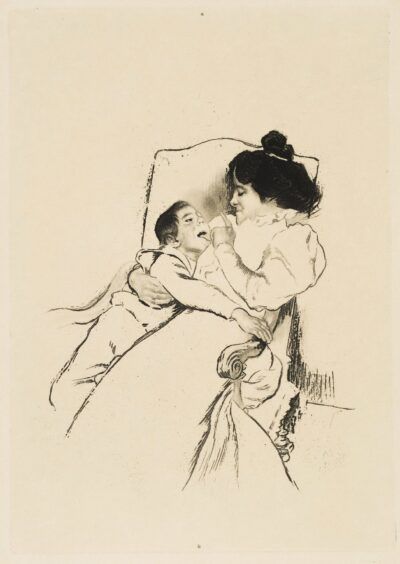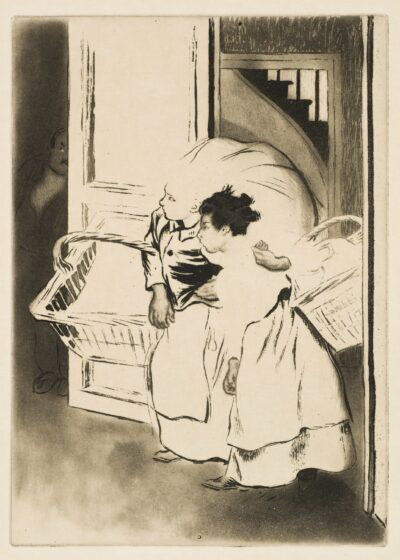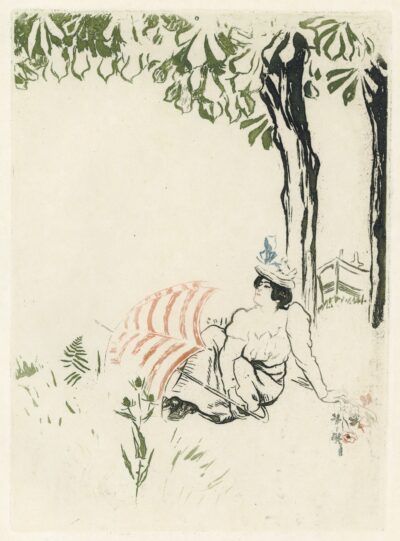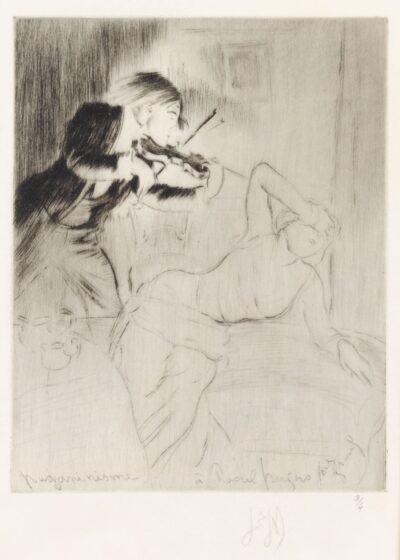Louis Legrand
(French, 1863-1951)
Biography
Louis Legrand was born in Dijon, France on September 29,1863. His desire to become an artist was such that he studied at the Dijon Ecole des Beaux-Arts in his spare time and in the evenings while working as a bank teller. At the age of twenty he won the Devosge prize at that school and a year later left for Paris. Soon after his arrival there, he began to study etching and engraving techniques with Félicien Rops. His first commission was four etchings for Les Premières Illustrées in 1884, a publication that Steinlen and Willette later also contributed. In 1885 he completed eight etchings for a novel by Joseph Gayda, Ce Brigand D’amour. This was the beginning of a long apprenticeship as an illustrator where he lived mostly on revenues from drawings executed for children’s pulp magazines.
In May of 1891, Legrand gained instant celebrity when Rodriguès used his watercolors of music-hall dancers to illustrate a commentary on the cancan. The Gil Blas magazine published an illustrated supplement, the Gil Blas Illustré, which devoted its first two issues to the Rodriguès text with illustrations in color by Legrand. An unprecedented 60,000 copies sold out immediately. The publisher Dentu persuaded Legrand to etch the compositions and in 1892 these appeared in a book titled Le Cours de Danse Fin de Siècle ( Turn of the Century Dance Classes) with a revised text by Rodriguès. A trip to Brittany signaled Legrand’s break with his Courrier Français past. On his return from Brittany, he created fourteen lithographs inspired by his visit. He portrayed Breton fishermen, peasants and daily life at the marketplace. These works were published by Gustave Pellet. This was the beginning of a collaboration between the artist and publisher resulting in some 300 works. Pellet was to become Legrand’s lifelong friend and publisher. Gustave Pellet came from a wealthy family. When a financial crash in 1886 made it necessary for Pellet to earn a living he opened a bookstore. He decided to diversify into pictures and graphics and to publish original prints. His first artist was Louis Legrand. Pellet became a successful publisher and an avid collector. Legrand was his favorite. It’s said the only place to see Legrand’s pastels was in Pellet’s collection. Pellet was the publisher of many of Lautrec’s finest prints as well as those of Odilon Redon,, Alexandre Lunois, Charles Maurin, Rops, and Signac.
In 1896 Legrand’s first major one-man show comprising two hundred of his works was held at Samuel Bing’s L’Art Nouveau gallery. In 1900 at the Universal Exhibition in Paris Legrand was awarded the Silver Medal. In 1904 his second important one-man show was held at the Galerie Georges Petit where he exhibited paintings, pastels, drawings and forty-nine etchings. Two years later he was awarded the Légion d’Honneur. A major retrospective exhibition was held in 1911 with his complete graphic works shown at the Palais des Modes and paintings, pastels and drawings being exhibited at the Durand-Ruel Gallery. During this time a vast number of articles were written praising his art and in 1908 the magazine L’Art et le Beau (Art and Beauty) devoted a complete issue to him. In 1910 Camille Mauclair published a two hundred and seventy-four page monograph on Legrand which included a summary list of his graphic works to date.
It is important to note that Legrand preceded Lautrec and others in publishing works that portrayed the cancan dancers and the demimonde of Montmarte. Prior to WWI, during the most productive part of his career, Legrand achieved major recognition. Today, Legrand’s work is featured in fine museum and private collections worldwide.





